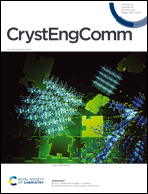One-step preparation of C-doped TiO2 nanotubes with enhanced photocatalytic activity by a water-assisted method
Abstract
The crystallization of amorphous TiO2 nanotubes, which were prepared by anodic oxidation, was carried out by a water-assisted method at low temperatures. The crystalline phase and the morphology of TiO2 nanotubes were observed by X-ray diffraction (XRD) and field emission scanning electron microscopy (FESEM), respectively, and the photocatalytic activity was characterized by the degradation of methylene blue (MB). Results show that TiO2 nanotubes crystallized by a water-assisted method at 50 °C for 4 h exhibited high crystallinity, a preferable nanotube structure and therefore, high photocatalytic activity. Sucrose was added to the aqueous solution as a carbon source for preparing C-doped TiO2 nanotubes. X-ray photoelectron spectroscopy (XPS) and ultraviolet-visible diffuse reflectance spectroscopy (UV-vis DRS) were used to observe the chemical state of C-doped TiO2 nanotubes. After C-doping, the crystalline phase and morphology of TiO2 nanotubes hardly changed but the bandgap of TiO2 was narrowed, which endowed TiO2 nanotubes with wide-range light absorption, significantly enhancing the photocatalytic activity. This one-step method at a low temperature of 50 °C provides a new pathway for preparing C-doped TiO2 nanotube photocatalysts with enhanced photocatalytic activity.

- This article is part of the themed collection: Nanomaterials


 Please wait while we load your content...
Please wait while we load your content...